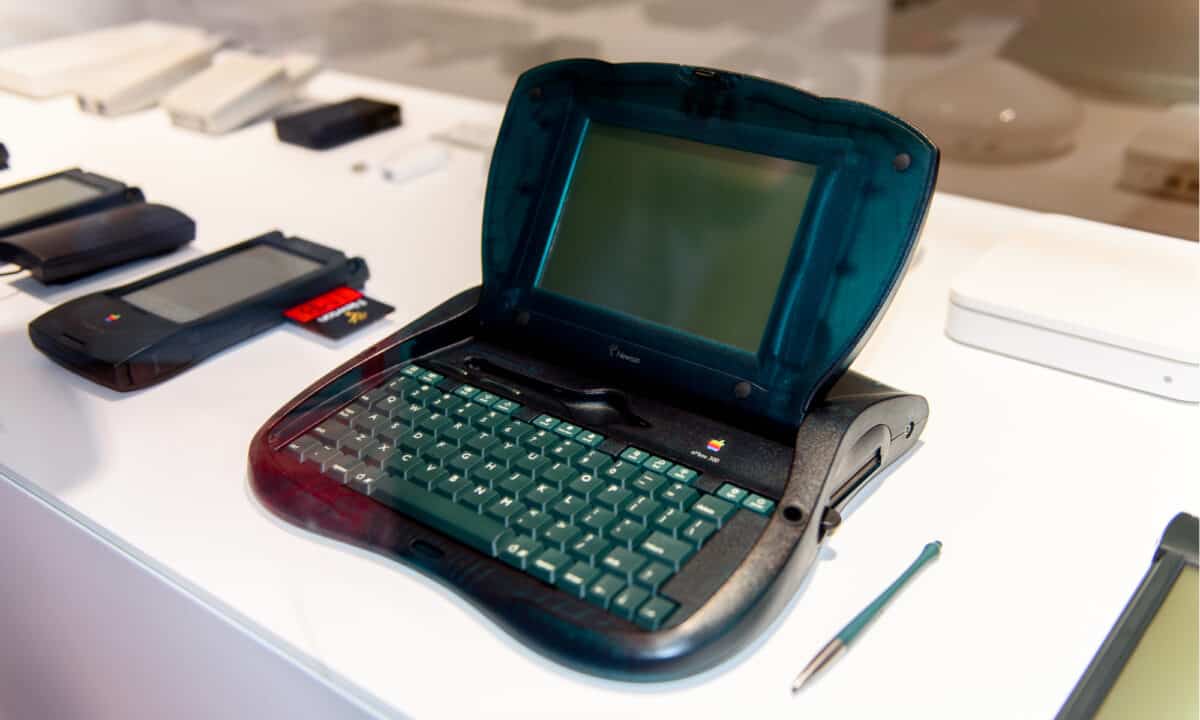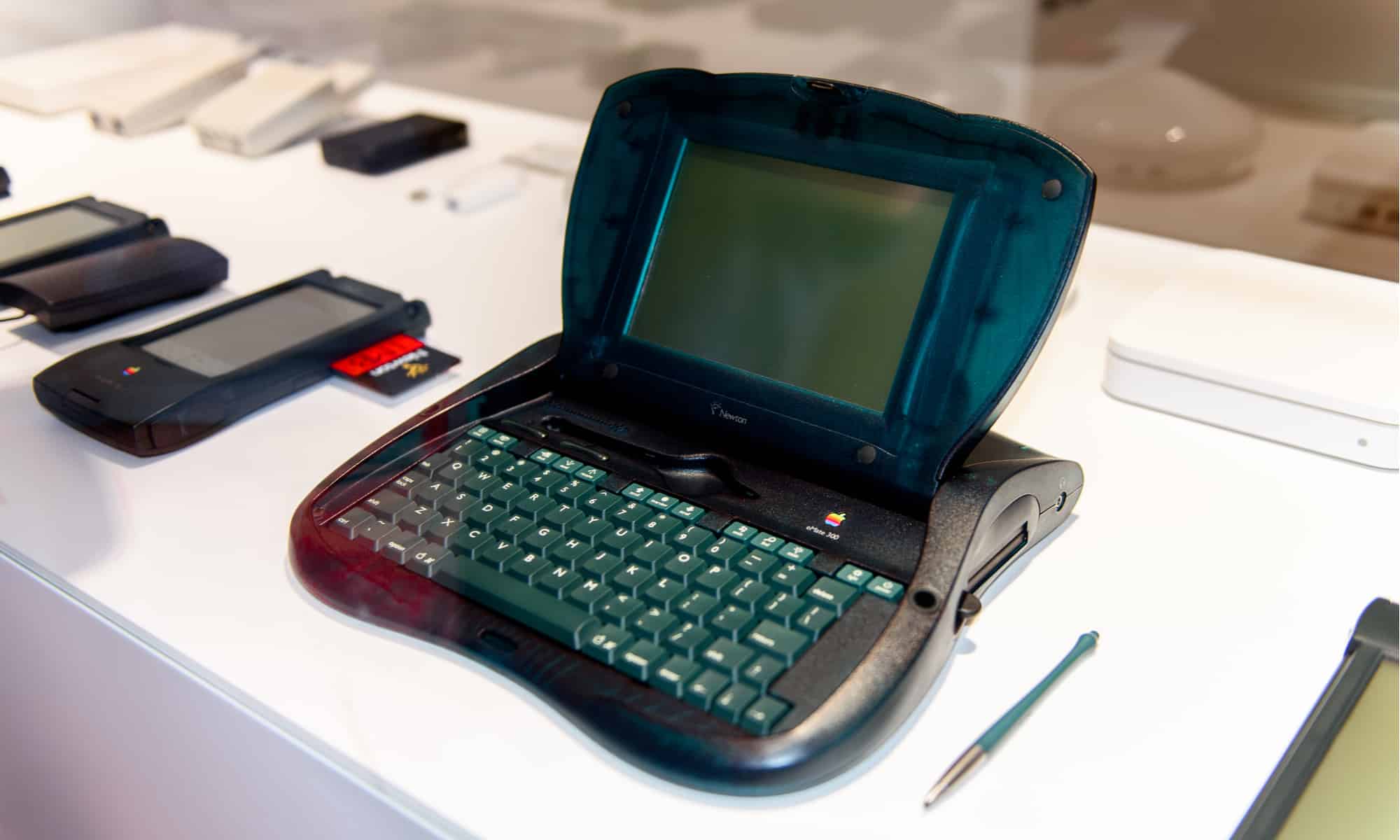
Apple is famous for its world-changing products that have defined entire eras of technology.
Yet, in 1992 the company announced a product lineup that would turn out to be anything but revolutionary, the Apple Newton. After less than five years on the market, Steve Jobs would immediately shutter it after returning to the company.
What caused the Newton to become such a high-profile flop?
The Beginning: The Development of the Newton
Steve Jobs left Apple in 1985 after engaging in a power struggle with then-CEO John Sculley.
Thanks to the Macintosh — a product spearheaded by Steve Jobs — Apple continued to grow after his departure. Sales hit $4 billion in 1988. The next year they grew to $5 billion, and by 1991 they had eclipsed $6 billion.
Yet, behind this success, Apple was extremely reliant on the Macintosh for its revenues. In addition, the company was struggling to grow its market share and profits were under pressure. In the early 1990s, Macintosh’s market share peaked at just under 10% of the computing market.
Looking for new growth markets, John Sculley set his sights on more portable products. His concept — known as Knowledge Navigator — was to build a device that anticipated your needs.
The earliest concepts of Knowledge Navigator date back to 1986, just the year after Jobs’ ousting. At the time the concepts were crude and relied on artificial intelligence technologies that were often decades away. However, an internal team within Apple led by Jean Louis Gassee began making strides on a tablet-like computer.
Opportunity Knocks: The Bizzare Encounter that Brought the Newton to Life
Gassee’s team was making strides on Newton and overcoming the tremendous technical hurdles to releasing a powerful digital assistant with the limitations of late 1980s technology.
For example, one of the key hold-ups that prevented bringing Newton to life was the handwriting software required to take stylus writing and accurately convert it to text onscreen.
As one story goes, an Apple VP staying in Moscow awoke to frantic knocking at his door. He received a floppy disc with handwriting software that proved remarkably more accurate than what Apple had developed.
Another version of the story is that Apple actually licensed handwriting software from a Russian firm. Regardless of the actual details, progress was being made on this immense challenge.
Yet, the problem was that the initial Newton prototypes (then named Figaro) were preposterously expensive. The portable device was packed with so much computing power and cutting-edge hardware it would have retailed for $6,000 or more.
John Sculley, who had begun taking a more active role in the development of the Newton scaled the technology back and asked for a product at a fraction of the price.
Launching the Newton MessagePad
At CES in early 1992, John Sculley announced Apple would soon revolutionize the world with a new category of devices called personal digital assistants (PDAs).
When Sculley made his CES announcement the software for Newton devices was still terribly buggy. Yet, with Sculley driving to reveal the device to the press by the summer of 1992, engineers worked round the clock at Apple to have demos ready.
Demonstrations proved successful (even though still Newton’s software remained incredibly buggy) and Apple pushed for a summer 1993 release date.
The problem? With several delays on the project and Sculley having first revealed it in the summer of 1992, many competing companies had rushed PDAs to market and stolen Apple’s thunder. In addition, the company’s profits plummeted in 1993, which caused John Sculley to resign as CEO.
Still, the original Newton MessagePad first went on sale on August 3rd across the United States. Its features included:
- A 20 MHz ARM processor
- 640 KB of RAM
- A 336X240 black and white display
- Power from four AAA batteries
- All weighing in at .88 pounds.
The original MessagePad sold for an MSRP of $699, making it far less expensive than some early prototypes.
The product could send faxes, beam data back and forth to other Newton MessagePads (a major feature at the time), take notes, and store contacts.
(As an interesting side note: AT&T saw enough potential in Newton that they discussed acquiring Apple during this time. The deal never came to fruition.)
Why Did Newton Fail?
After the launch of the first Newton MessagePad, Apple continued releasing new versions.
In 1994 the MessagePad 100 was released. The product cut the entry-level price down to $499. The MessagePad 2000 was released in 1997 and came with upgraded specifications that included a 162 MHz ARM processor. The screen resolution was also improved to 480 X 320. In addition, Apple produced the eMate 300, which used Newton software and had a keyboard slightly smaller than a laptop
Yet, by February 1998 Apple had discontinued Newton products. Steve Jobs was back as CEO and had little affinity for the product line-up.
In addition, Newton was created with a PC-like model. While most consumers today remember the name Newton, that was the name for Apple’s personal assistant operating system.
John Sculley bet that he could pursue a Windows-like model where Apple licensed Newton software to other vendors while Apple itself made MessagePad products featuring the operating system. While companies like Sharp, Siemens, and Motorola all produced PDAs powered by Newton, Apple never found enough traction for licensing to be a viable revenue source.
In addition, the original MessagePad suffered from a number of problems:
- It was large and relatively heavy: The first Newton weighed .88 pounds. That might not sound like much, but the first-generation iPhone weighed just 4.8 ounces.
- It was expensive: The original MessagePad started retailing at an MSRP of $699. While that’s a similar price to smartphones today, this was also in 1993 prices, and the PDA was far more limited than today’s phones.
- It got bad press: The handwriting recognition of Newton software was routinely mocked from late-night standup to The Simpsons. In truth, Newton handwriting software was quite good for the time and improved in later versions. However, with the Newton team rushing to ship early products, Newton devices could never slip the stigma of poor handwriting software.
- Competition: When the Newton was announced, John Sculley envisioned it as a completely new product category. However, by the late 1990s Palm had cut into Apple’s technology lead and Microsoft had launched its competing Windows CE software.
While Newton had a lot of forward-looking technology, ultimately the product was simply never able to achieve widespread commercial success.
The image featured at the top of this post is ©Anton_Ivanov/Shutterstock.com.

